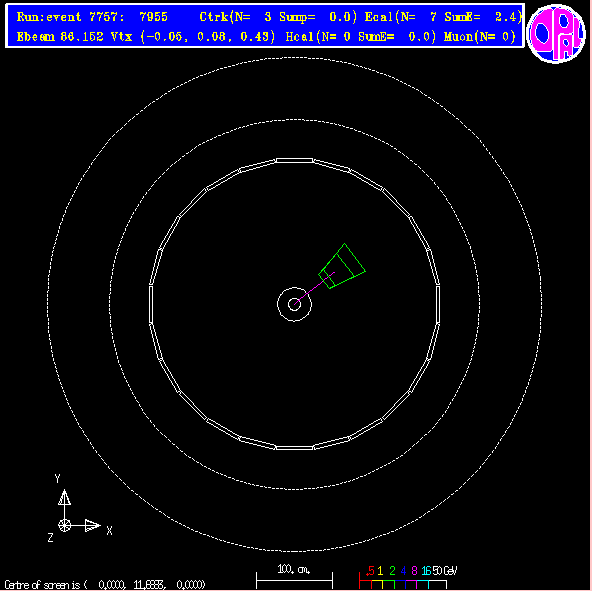
|
Hadrons are particles that are made up of quarks, antiquarks and gluons. We can identify the signals produced by hadrons in the following way:
Here are two example hadrons.
Example Hadron Number 1
End-On View of Event

|
This hadron satisfies all three of the criteria given above. Please go through the three criteria one by one and verify this for yourself! Click here if you want some help with this.
Side View of Event

|
Example Hadron Number 2
End-On View of Event

|
Side View of Event

|
This hadron satisfies only two of the three of the criteria given above. Make sure you understand which one does it not satisfy? Click here if you want some help with this.
Now you've understood the way we identify the tracks produced by the different
types of particles, please:
 click here to proceed to the next part
of the programme, which is
"Challenge Part 1".
click here to proceed to the next part
of the programme, which is
"Challenge Part 1".
 Back to description of the Detector.
Back to description of the Detector.
 Back to Home Page with table of contents.
Back to Home Page with table of contents.